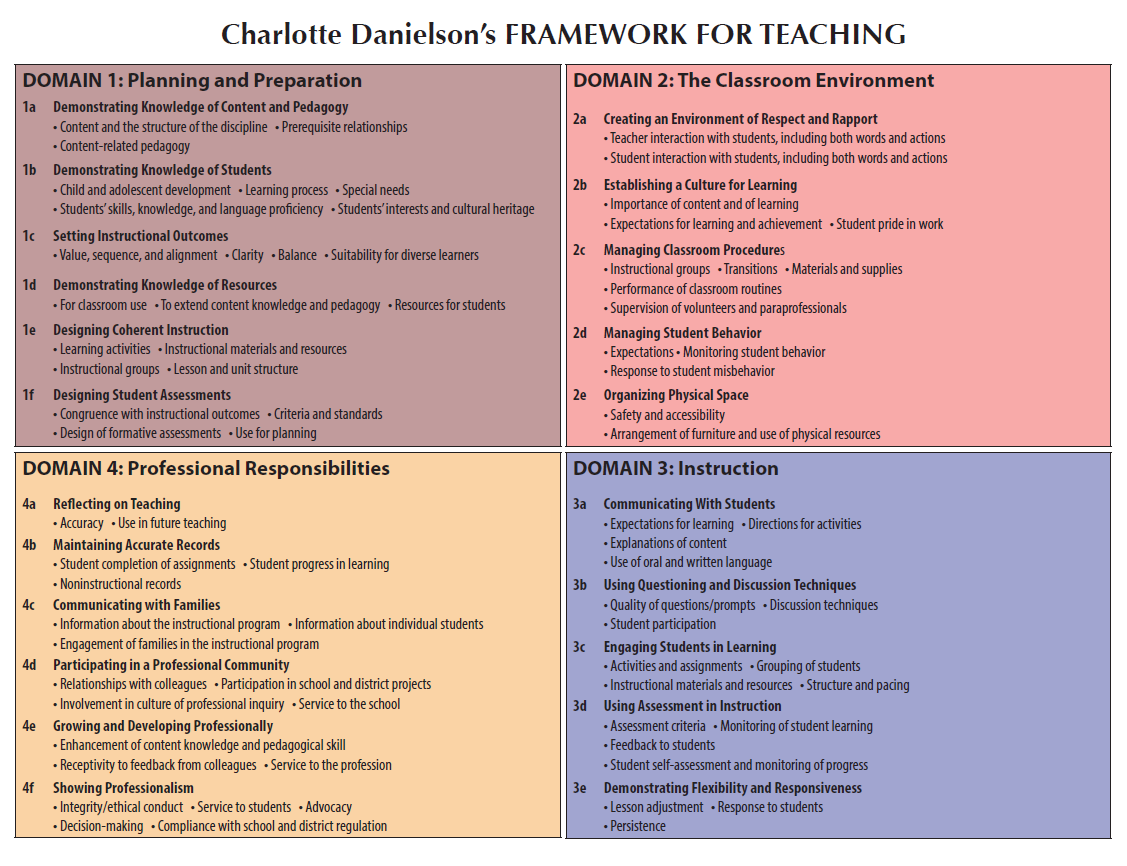
With each concept I teach, I evaluate the students understanding through their programming code, the required comments explaining the code, and the coding structure. I also know what they understand by listening to the questions that they ask. Formative assessment is the primary way that I evaluate if they understand the concepts, there is no need for a summative assessment if they are not ready. Reflection on instruction as cyclical strategy allows for implementing changes to increase my student’s knowledge of my content (Teach). Continue reading Achieving Better Instruction through Reflection

 in the components of domains 2 and 3 in Danielson’s Framework. Since our district has adopted the framework for the teacher evaluation process, the various strategies within the instructional model families can be used to strength weaknesses within those components. While only one of the components was attached to each post, it is important to note that each instructional strategy could be used within multiple components.
in the components of domains 2 and 3 in Danielson’s Framework. Since our district has adopted the framework for the teacher evaluation process, the various strategies within the instructional model families can be used to strength weaknesses within those components. While only one of the components was attached to each post, it is important to note that each instructional strategy could be used within multiple components. 